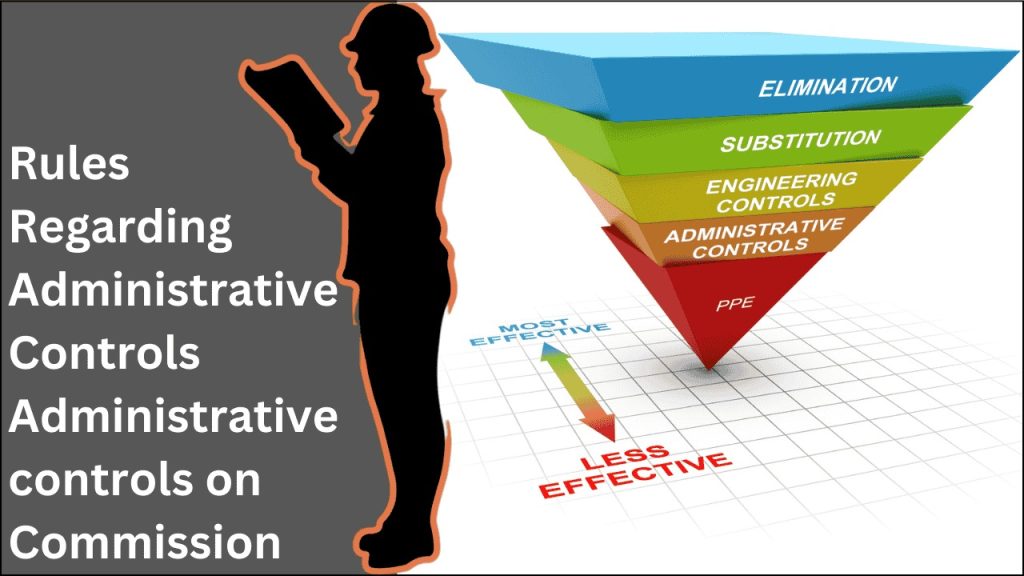
Administrative control refers to the rules and guidelines established to regulate the functioning of a commission. These controls ensure efficiency, fairness, and accountability in the operations of the commission. A commission is a governing body responsible for implementing policies, overseeing regulations, and making important decisions related to a specific sector or issue. To prevent misuse of power and ensure smooth governance, administrative control mechanisms are put in place.
1. Legal Framework and Authority
The foundation of administrative control is based on the legal framework under which a commission operates. This includes:
- Legislative Acts and Regulations: Commissions function under specific laws passed by the government, which define their powers and limitations.
- Jurisdictional Boundaries: The law outlines the scope within which a commission can operate, ensuring that it does not exceed its mandate.
- Government Oversight: Commissions are usually accountable to a higher authority, such as a ministry or a legislative body, which ensures they follow the rules properly.
2. Structure and Hierarchy
A well-defined organizational structure ensures that administrative control is properly maintained. The structure typically includes:
- Chairperson and Members: A commission is usually headed by a chairperson with appointed members who are responsible for making decisions.
- Administrative Staff: Support staff assist in implementing policies, managing records, and handling communication.
- Departments and Committees: Larger commissions may have separate departments focusing on different tasks, ensuring efficiency and specialization.
3. Appointment and Tenure
The process of selecting members of the commission follows specific rules:
- Selection Process: Appointments are usually made through a transparent process involving recommendations from experts and approval by government authorities.
- Tenure and Term Limits: Members serve for a fixed duration, preventing monopolization of power and ensuring fresh perspectives in decision-making.
- Removal and Resignation: Clear guidelines exist on how a commission member can be removed if they fail to perform their duties or violate ethical standards.
4. Decision-Making and Policy Implementation
Administrative controls ensure that decisions made by a commission are fair, unbiased, and in the public interest:
- Majority Rule: Most commissions follow a majority rule system where decisions are taken based on voting among members.
- Transparency in Decision-Making: Proper documentation and public disclosure of decisions ensure accountability.
- Implementation of Policies: The commission ensures that its policies are implemented effectively and monitored for compliance.
5. Financial Control and Budgeting
Commissions operate using allocated budgets, which are subject to strict financial control measures:
- Budget Allocation: Funds are allocated based on the commission’s operational needs and government policies.
- Auditing and Reporting: Regular audits are conducted to ensure proper utilization of resources and prevent financial mismanagement.
- Expenditure Limits: There are rules on how much a commission can spend and for what purposes, ensuring that public funds are used responsibly.
6. Ethical Guidelines and Accountability
To maintain integrity and trust, administrative rules enforce strict ethical standards:
- Code of Conduct: Members must follow ethical guidelines, including honesty, impartiality, and professionalism.
- Conflict of Interest Policies: Members must declare any personal interests that could influence their decision-making.
- Disciplinary Actions: If a commission member is found guilty of misconduct, disciplinary actions such as suspension or termination may be taken.
7. Monitoring and Evaluation
Continuous monitoring ensures that a commission functions effectively and meets its objectives:
- Performance Reviews: Regular evaluations measure the efficiency and effectiveness of the commission’s work.
- Public Feedback Mechanisms: Citizens and stakeholders can provide feedback to improve commission operations.
- Reform and Adaptation: Based on evaluations, necessary changes and improvements are implemented.
8. Transparency and Public Access to Information
Administrative controls ensure that commissions operate transparently:
- Right to Information: Citizens have the right to access information regarding the commission’s work.
- Publication of Reports: Annual reports and meeting minutes are often made public to ensure transparency.
- Media and Public Relations: Press conferences and public engagements help build trust and inform the public about the commission’s actions.
9. Legal Compliance and Dispute Resolution
To function within the law, commissions must adhere to legal guidelines and have mechanisms to resolve disputes:
- Adherence to Legal Procedures: Commissions must operate within the legal boundaries set by the government.
- Handling Disputes: If there is disagreement over commission decisions, a dispute resolution process is followed.
- Judicial Oversight: Courts have the power to review commission decisions if there are allegations of unfair practices.
10. Technology and Administrative Efficiency
Modern administrative controls utilize technology for better efficiency and transparency:
- Digital Record-Keeping: Electronic databases ensure secure storage and easy access to information.
- Online Public Services: Many commissions offer digital platforms for submitting applications and complaints.
- Automation in Decision-Making: Some routine tasks are automated to reduce errors and increase efficiency.













